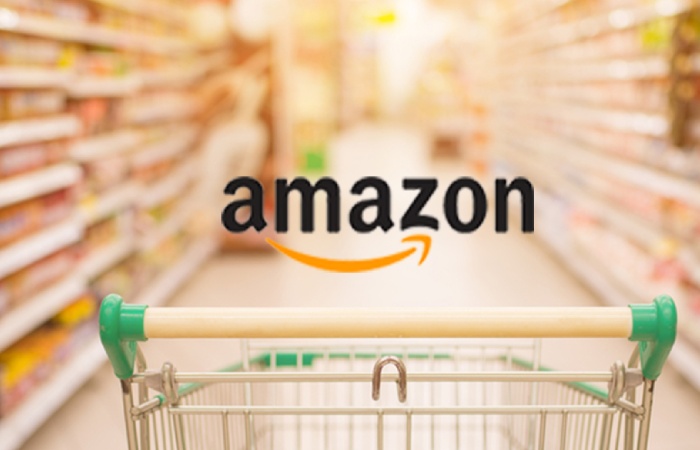Amazon is one and only one of the world’s largest online retailers, offering customers a wide variety of products and services worldwide. Jeff Bezos retail marketing founded the company in 1995 as an online bookstore, but it has since grown to offer gadgets, clothing, groceries, and even streaming videos.
Amazon’s focus on customer satisfaction is one of the reasons for its success. The company has invested heavily in its customer service infrastructure, offering features such as easy returns.
Fast and reliable shipping and personalized recommendations based on customers’ browsing and purchasing history. This has helped Amazon build a loyal customer base and maintain its leadership position in online retail.
Understanding of Amazon’s Retail Marketing Strategy
The critical marketing implementation behind the success of Amazon’s marketing strategy is integrating digital marketing into their strategies. This enormous level of growth can only be achieved when digital marketing challenges are appropriately analyzed, and the fundamentals of digital marketing are applied precisely.
Starting with a primary e-commerce platform, Amazon today is one of the leading multinational companies targeting e-commerce, cloud computing, media streaming, artificial intelligence, and many other hot technical areas.
With a precisely designed and analyzed marketing strategy, Amazon has achieved rapid growth compared to competing companies.
Amazon’s marketing strategy has also become one of the most famous case study topics among students of top MBA universities. Below is a case study analysis of Amazon’s marketing strategy, which can help you differentiate this company from its competitors.
History of Amazon Marketing

Amazon’s marketing history is marked by significant milestones and strategies that contributed to the company’s growth and dominance. Here’s a concise overview:
- 1994: Founded by Jeff Bezos as an online bookstore.
- 1997: Goes public and expands product line.
- 2005: Introduced Amazon Prime for fast shipping and more.
- 2010s: Global expansion and launch of AWS.
- 2017: Acquired Whole Foods and entered the grocery industry.
- 2020s: Continued innovation in artificial intelligence, drones, and retail.
Retail Marketing Mix of Amazon
“What is a marketing mix?” You may be wondering. A business has a unique idea to present and promote itself by mixing several areas as part of its marketing plan.
This marketing strategy is called a “marketing mix.” One of the most well-known examples of this approach in Amazon’s marketing strategies is the Amazon Marketing Mix approach.
A marketing mix comprises four key elements: product, price, location, and promotion. These four elements of a business’s marketing plan are called the “four Ps.” They effectively develop a marketing plan to market a product or service to your target audience.
Now let’s look at the 4Ps of Amazon’s retail marketing strategy:
–Product
As noted above, Amazon only sold books in its early days. After all these years, Amazon has successfully sold products in several different categories. They include categories like kitchen accessories, electronics, outdoor accessories, books, artwork, etc.
Amazon’s marketing strategy for marketing products was that simple. Amazon expanded the product category by adding new product categories to compete with its competitors.
–Pricing retail marketing
From the business perspective, pricing a product or service can be done in several ways. However, the best way to price a product or service is to encourage customers to spend their money sensibly.
To compete with its competitors, Amazon has developed a unique strategy to attract customers and make them spend.
One of the best pricing strategies Amazon uses is “competitive pricing.” They analyze their competitors’ prices and lower the cost of their products.
The pricing strategy was developed after taking into account several factors. Here are some of the factors:
- Financial expenses
- Supply and demand
- Consumer opinions
- Competence
Amazon’s retail marketing plan includes a pricing strategy that stands out as one of the best because it analyzes trends and then prices the products at a discounted price. As a result, they get a large number of high-quality customers.
When customers are ready to purchase these products, Amazon will begin recommending related products or accessories, allowing them to explore more of Amazon’s options and consider buying them.
–Places retail marketing
Amazon’s online marketplace is one of its best assets. Amazon’s marketing strategy and business strategies have enabled users to shop on Amazon remotely from anywhere in the market.
And to make a big difference, they also launched Amazon Global to allow customers to purchase products internationally from anywhere in the world.
The fact that Amazon can offer a service that ships products quickly indicates that customers are willing to invest time and money in this business.
Without the reputation, the service provided and the wide range of product categories available have led the company to become a successful business.
–Promotion retail marketing
When it comes to marketing, everyone understands the importance of promotion. Amazon’s marketing strategy is not limited to digital marketing; it also uses variations of traditional marketing strategies.
To create promotions, products were advertised in news magazines, newspapers, billboards, television broadcasts, and other similar operations.
Good communication lets them know exactly who to contact to sell a particular product.
Platforms and Channels of Amazon Marketing
In addition to the most used retail marketing mix strategy, Amazon marketing channels also use other marketing models, such as PPC campaigns.
Amazon PPC (Pay-per-click) is one of Amazon’s advertising models that allows merchants to amplify their products.
When creating these campaigns, sellers display their products above other products. Amazon charges sellers a small fee whenever a potential customer clicks and lands on the product page.
Amazon’s retail marketing strategies retail marketing

Amazon’s marketing success focuses on several key strategies:
- Customer Focus: Amazon prioritizes customer satisfaction with exceptional service and fast returns.
- Personalized Recommendations: Their recommendation engine analyzes user data for customized product suggestions.
- Amazon Prime: Prime offers benefits like fast shipping and streaming, loyalty, and increased spending.
- Third-party sellers: Amazon Marketplace expands its offerings, attracting more customers and generating revenue.
- Innovation: Investments in technology, such as artificial intelligence and robotics, improve efficiency and customer experience.
- Data Insights: Amazon uses data analytics to guide marketing decisions and strategies.
Amazon Marketing Strategy for Partnerships retail marketing
Amazon’s strategic partnerships have been central to its expansion and success. They have collaborated with various companies and organizations to improve their offerings and reach. Some notable partnerships include:
Whole Foods Market: Amazon’s acquisition of Whole Foods allowed them to enter the grocery market and integrate online and offline shopping experiences.
Twitch: The acquisition of Twitch, a live-streaming platform, has opened new avenues for content promotion and audience engagement.
Amazon Web Services (AWS): AWS, Amazon’s cloud computing division, provides cloud services to a wide range of businesses, including startups and enterprises, boosting Amazon’s profitability.
Amazon Digital Marketing Strategies retail marketing
Amazon’s marketing reach is extensive, targeting customers of all types and reaching them through multiple channels. Now that everyone is using social media, Amazon’s marketing strategy allows you to promote and advertise your products to many customers who use social media as a medium.
To reach audiences or customers across multiple categories, Amazon has leveraged various influencers, large and small, across the world to reach more audiences effectively.
Amazon’s digital marketing strategy targets Twitter, Instagram, YouTube, Pinterest, and Facebook audiences. Amazon has been able to reach specific customers and global audiences more effectively.
This strategic approach allows Amazon to promote and build awareness of its products to a broad customer base through the power of digital media, ensuring its message resonates with today’s tech-savvy consumers.
6 Tips for Your Amazon Marketing Strategy 2023
Looking ahead to 2023, here are some Amazon marketing tips to improve your strategy
Optimize Product Listings – Enhance product listings with keywords, high-quality images, and detailed descriptions.
Use Amazon Advertise: Amazon advertise tool, such as sponsor product and brand, can be use to gain visibile.
Analyze data regularly: Analyze sales and customer data to inform your strategy.
Encourage customer reviews: Actively seek and respond to comments to build trust.
Expand internationally: Consider selling on Amazon’s international marketplaces to reach new audiences.
Stay informed about Amazon policies and algorithm changes to make effective strategy adjustments.
Conclusion
This article explores the secret to Amazon’s success as the world’s best marketplace. Adopting digital marketing in your tactics is the leading marketing execution that explains Amazon’s marketing strategy’s success.
Compare to other competing company, Amazon achieve such rapid growth quickly thanks to an adequately evaluated and designed marketing strategy.
Through its social retail marketing strategy, Amazon can reach a significant audience on social media with promotions and advertisements for its products.
FAQ
1. What Makes Amazon’s Retail Marketing Strategy Successful?
Amazon’s success is built on customer-centric strategies, data-driven decision-making, dynamic pricing, personalized recommendations, and an efficient supply chain. Artificial intelligence and machine learning help optimize product placement and advertising.
2. Where can I find official information about Amazon’s marketing approach?
Amazon Investor Relations (https://ir.aboutamazon.com) shares financial reports and marketing strategies.
The Amazon Advertising Blog (https://advertising.amazon.com/blog) offers information about advertising strategies and promotions.
Amazon Seller Central (https://sellercentral.amazon.com) offers in-depth third-party seller marketing tactics analysis.
3. What Role Does Personalization Play in Amazon Marketing?
Amazon tracks customer behaviour, preferences, and purchase history to create personalized product recommendations, emails, and targeted ads. Their reference engine accounts for 35% of their total sales.
4. How does Amazon use SEO to increase the visibility of its products?
Amazon optimizes product listings using the A9/A10 algorithm, which prioritizes:
- Keywords in titles and descriptions
- Customer reviews and ratings
- Competitive pricing and sales performance
- Fast shipping (FBA – Fulfillment by Amazon)
5. How can I analyze Amazon’s pricing strategy?
Amazon uses dynamic pricing, adjusting prices based on demand, competition, and shopping behaviour. Tools like Keepa, CamelCamelCamel, and Jungle Scout track price fluctuations and competitor strategies.
6. What advertising options does Amazon offer?
- Sponsored Products (appear in search results)
- Sponsored Brands (show brand logo and various products)
- Sponsored Display Ads (retargeting based on browsing history)
- Amazon DSP (demand-side platform) (advanced targeting for high-budget advertising)
7. How does Amazon use influencer and affiliate marketing?
The Amazon Associates program pays affiliates to drive sales through links. The Amazon Influencer program helps influencers set up stores and recommend products through social media.
8. How can I analyze Amazon’s email and content marketing strategies?
Subscribe to Amazon newsletters and promotional emails to learn how to write, personalize, and offer offers.
Analyze Amazon’s blog and product pages to understand storytelling techniques.
9. How does Amazon use social proof in marketing?
Customer reviews and ratings increase trust and conversion rates.
Bestseller and Amazon’s Choice badges build relevance and authority.
User-generated content (photos/videos in reviews) adds authenticity.
10. What tools can I use to keep track of Amazon marketing trends?
Jungle Scout and Helium 10 (track top-selling products and keywords)
Keepa and CamelCamelCamel (track price history)
LikeWeb (analyze Amazon traffic sources)
BuzzSumo (monitor Amazon content and social media engagement)


